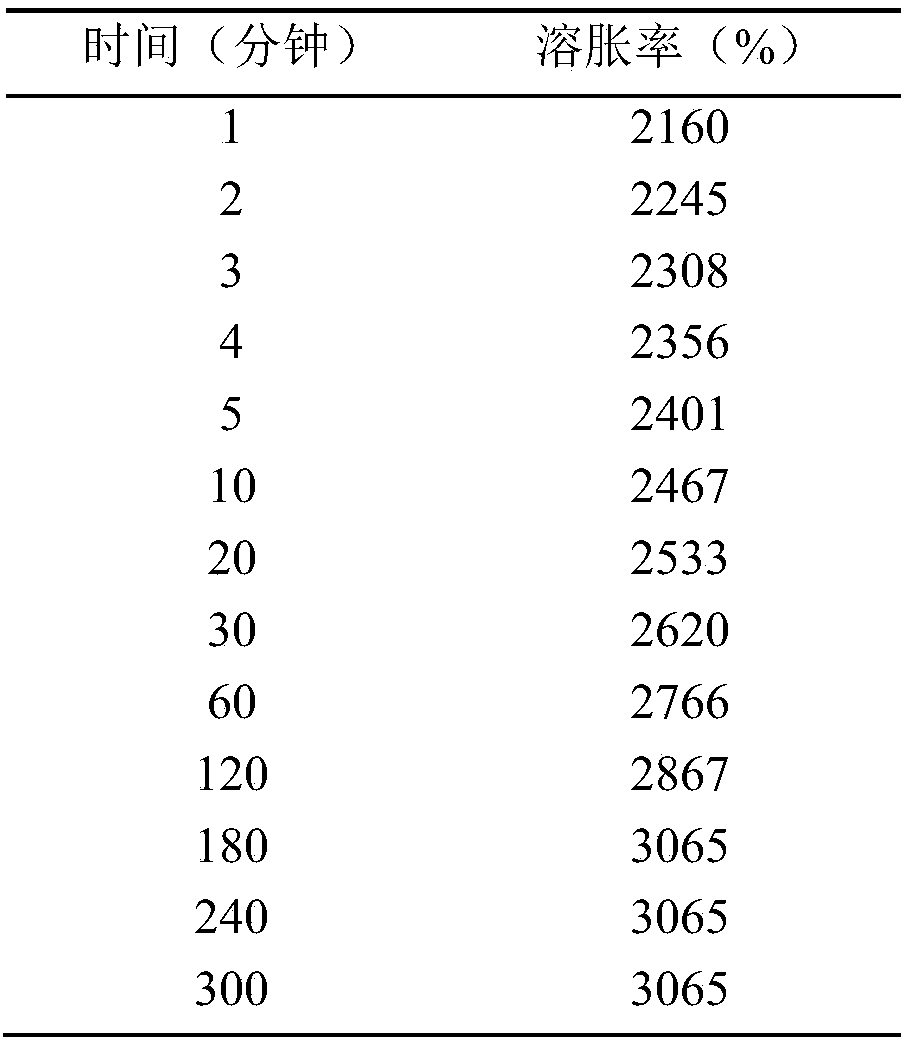Preparation method of double-layer type water-proof, anti-bacterial and anti-cicatricial chitosan sponge dressing
A chitosan, double-layer technology, applied in the application field of biomedical materials, can solve the problems of limited protection, difficulty in promoting wound repair, secondary damage, etc.
- Summary
- Abstract
- Description
- Claims
- Application Information
AI Technical Summary
Problems solved by technology
Method used
Image
Examples
Embodiment 1
[0013] First, 3 g of molecular weight 1 × 10 4 Da, the chitosan that deacetylation degree is 80% is dissolved in the acetic acid solution that 300mL volume ratio concentration is 1% (v / v), packs into mold and adds 4mL volume ratio concentration and is 2% (v / v) pentadiene Aldehydes were cross-linked at 35°C for 1 hour to obtain a chitosan hydrogel with a cross-linking degree of 10%, soaked in deionized water, rinsed, and lyophilized after removing acetic acid and excess glutaraldehyde to obtain a chitosan sponge. Then soak half of the sponge with 200mL mass volume ratio concentration of 0.03% (w / v) ethanol solution of lauric acid for 1 hour, dry to form a hydrophobic layer, and the other half of the sponge with 200mL mass volume ratio concentration of 10% (w / v) Soak in the glucosamine aqueous solution for 2 hours, freeze-dry to form a hydrophilic layer, and make a double-layer chitosan sponge dressing after sterilization.
Embodiment 2
[0015] First, 9 g of molecular weight 5 × 10 5 Da, the chitosan that the degree of deacetylation is 70% is dissolved in the acetic acid solution that 300mL volume ratio concentration is 2% (v / v), packs into mold and adds 40mL volume ratio concentration and is 1% (v / v) epoxy resin Chloropropane was cross-linked at 20°C for 3 hours to obtain a chitosan hydrogel with a cross-linking degree of 20%, soaked in deionized water, rinsed, and lyophilized after removing acetic acid and excess epichlorohydrin to obtain chitosan Sponges, then soak half of the sponges with 200mL mass-volume concentration of 0.01% (w / v) stearic acid ethanol solution for 1 hour, dry to form a hydrophobic layer, and the other half of the sponges with 200mL mass-volume concentration of 20% (w / v) / v) soaked in glucosamine aqueous solution for 1 hour, freeze-dried to form a hydrophilic layer, and made a double-layer chitosan sponge dressing after sterilization.
Embodiment 3
[0017] First, 5g of molecular weight is 1×10 5 Da, deacetylation degree is that the chitosan of 85% is dissolved in the acetic acid solution that 300mL volume ratio concentration is 3% (v / v), packs into mold and adds 5mL mass volume ratio concentration and is 10% (w / v) three Sodium polyphosphate was cross-linked at 15°C for 2 hours to obtain a chitosan hydrogel with a cross-linking degree of 10%, soaked in deionized water, rinsed, and lyophilized after removing acetic acid and excess sodium tripolyphosphate to obtain chitosan hydrogel. Sugar sponge, soak half of the sponge with 200mL mass-volume concentration of 0.05% (w / v) palmitic acid ethanol solution for 3 hours, dry to form a hydrophobic layer, and the other half of the sponge with 200mL mass-volume concentration of 30% (w / v) / v) soaked in glucosamine aqueous solution for 2 hours, freeze-dried to form a hydrophilic layer, and made a double-layer chitosan sponge dressing after sterilization.
PUM
 Login to View More
Login to View More Abstract
Description
Claims
Application Information
 Login to View More
Login to View More - R&D
- Intellectual Property
- Life Sciences
- Materials
- Tech Scout
- Unparalleled Data Quality
- Higher Quality Content
- 60% Fewer Hallucinations
Browse by: Latest US Patents, China's latest patents, Technical Efficacy Thesaurus, Application Domain, Technology Topic, Popular Technical Reports.
© 2025 PatSnap. All rights reserved.Legal|Privacy policy|Modern Slavery Act Transparency Statement|Sitemap|About US| Contact US: help@patsnap.com



